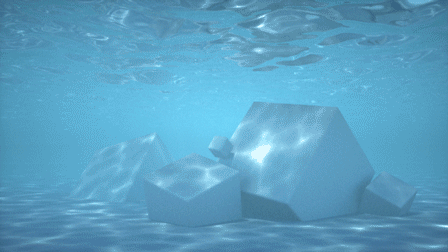You can actually use the surface of the water as a "gobo". Back in V2 I used dirt in opacity but that produces a glich since V3 so I guess noise should do the trick for now.
Also, with raytype you can make the noise visible to shadow rays only . You can get some lovely caustics even in Ambient Occlusion mode.
256 samples only:

Btw. for the quick "fog" setup I just used a small plane in front of the camera and oriented towards the camera with this material: specular with no refraction + scattering medium. It's hard to see in the gif but there are some god rays there too. Super easy to setup and if you use emission instead of scattering it renders realtime on a single gtx780 in 1080p.
Cheers
Milan



